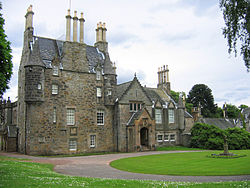
Dalmeny House is a Gothic revival mansion located in an estate close to Dalmeny on the Firth of Forth, in the north-west of Edinburgh, Scotland. It was designed by William Wilkins, and completed in 1817. Dalmeny House is the home of the Earl and Countess of Rosebery. The house was the first in Scotland to be built in the Tudor Revival style. It provided more comfortable accommodation than the former ancestral residence, Barnbougle Castle, which still stands close by. Dalmeny today remains a private house, although it is open to the public during the summer months. The house is protected as a category A listed building, while the grounds are included in the Inventory of Gardens and Designed Landscapes in Scotland.
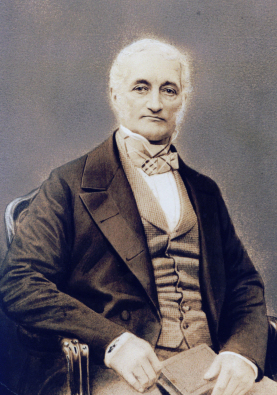
William Burn was a Scottish architect. He received major commissions from the age of 20 until his death at 81. He built in many styles and was a pioneer of the Scottish Baronial Revival, often referred to as the golden age of Scottish architecture.
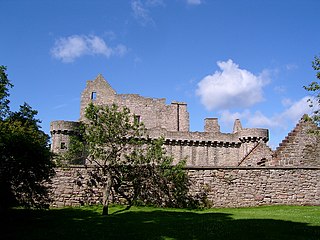
Craigmillar Castle is a ruined medieval castle in Edinburgh, Scotland. It is three miles (4.8 km) south-east of the city centre, on a low hill to the south of the modern suburb of Craigmillar. The Preston family of Craigmillar, the local feudal barons, began building the castle in the late 14th century and building works continued through the 15th and 16th centuries. In 1660, the castle was sold to Sir John Gilmour, Lord President of the Court of Session, who breathed new life into the ageing castle. The Gilmours left Craigmillar in the 18th century for a more modern residence, nearby Inch House, and the castle fell into ruin. It is now in the care of Historic Environment Scotland as a scheduled monument, and is open to the public.
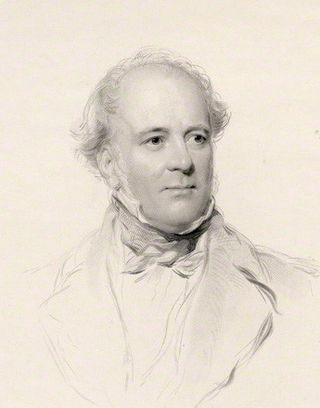
Andrew Rutherfurd, Lord Rutherfurd, was a Scottish advocate, judge and politician.
Silverknowes is a district of Edinburgh, Scotland. Silverknowes lies to the northwest of the city. The district contains over 2000 homes, ranging in size from bungalow to semi-detached housing, much of it built during the mid-twentieth century.

Balmaghie, from the Scottish Gaelic Baile Mhic Aoidh, is an ecclesiastical and civil parish in the historical county of Kirkcudbrightshire in Dumfries and Galloway, Scotland and was the seat of the McGhee family. It is bordered by the River Dee to the north and east. Threave Castle stands on an island in the river. The River Dee is commonly known as the Black Water of Dee on the northern border, the name changes with the meeting of the Water of Ken to the north west and is then known as Loch Ken along the eastern border. Balmaghie parish borders Girthon to the west and Tongland and Twynholm to the south. The closest market town is Castle Douglas about 6 miles from Balmaghie Kirk.

Clan Napier is a Lowland Scottish clan.
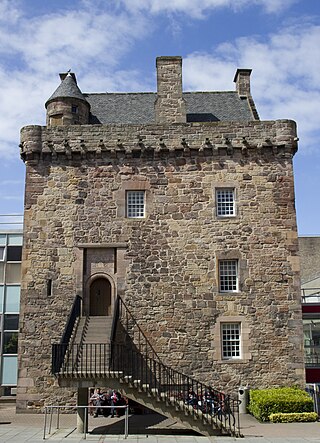
Merchiston Tower, also known as Merchiston Castle, was probably built by Alexander Napier, the 2nd Laird of Merchiston around 1454. It serves as the seat for Clan Napier. It was the home of John Napier, the 8th Laird of Merchiston and the inventor of logarithms, who was born there in 1550.
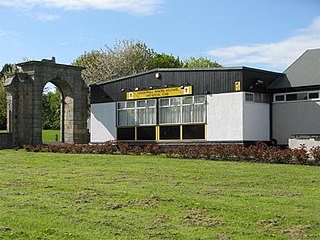
Danderhall is a village in Midlothian, Scotland, just outside Edinburgh but inside the Edinburgh City Bypass.
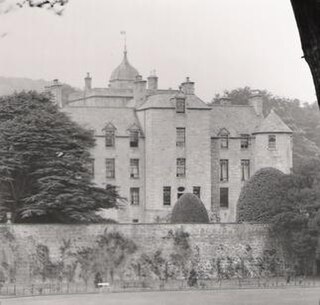
Haltoun House, or Hatton House, was a Scottish baronial mansion set in a park, with extensive estates in the vicinity of Ratho, in the west of Edinburgh City Council area, Scotland. It was formerly in Midlothian, and it was extensively photographed by Country Life in September 1911.
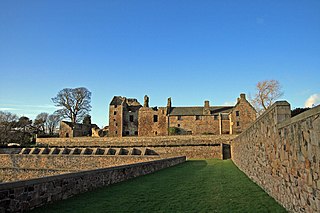
Aberdour Castle is in the village of Easter Aberdour, Fife, Scotland. Parts of the castle date from around 1200, making Aberdour one of the two oldest datable standing castles in Scotland, along with Castle Sween in Argyll, which was built at around the same time.

Seton Palace was situated in East Lothian, a few miles south-east of Edinburgh near the town of Prestonpans. Often regarded as the most desirable Scottish residence of the sixteenth and seventeenth centuries, the palace was erected in the 15th century by George, 4th Lord Seton.

Craigcrook Castle is a 6,701 square feet (622.5 m2) castle giving its name to the Craigcrook district of Edinburgh, about 3 miles (4.8 km) west of the centre of Edinburgh, Scotland. The castle is primarily of the 17th century, though with later additions. In the 19th century, it was the home of Francis Jeffrey, Lord Jeffrey, and became known for its literary gatherings. It is a category B listed building.

Barnbougle Castle is a historic tower house on the southern shore of the Firth of Forth, between Cramond and Queensferry, and within the parish of Dalmeny. It lies within the Earl of Rosebery's estate, just north-west of Dalmeny House. Although its history goes back to the 13th century, the present castle is the result of rebuilding in 1881 by the 5th Earl of Rosebery, who served as Prime Minister from 1894 to 1895.

The barony of Cartsburn in the Baronage of Scotland was created for Thomas Crawfurd of Cartsburn in 1669, when the lands of Cartsburn in the Parish of Easter Greenock in the Shire of Renfrew were erected in liberam baroniam, as a free barony held of the Prince and Great Steward of Scotland. The estate of Cartsburn, also known as Crawfurdsburn, incorporated the lands of Cartsdyke and part of the lands of Easter Greenock Castle. The Barony of Cartsburn is a feudal Barony of Scotland. The seat of the Barony was the House of Cartsburn, built in the 17th century near Greenock, Renfrewshire.
Sir Archibald Napier was a Scottish landowner and official, master of the Scottish mint and seventh Laird of Merchiston.
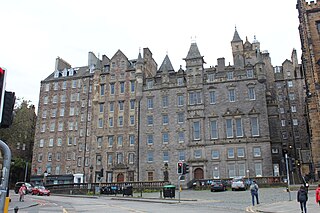
David Cousin was a Scottish architect, landscape architect and planner, closely associated with early cemetery design and many prominent buildings in Edinburgh. From 1841 to 1872 he operated as Edinburgh’s City Superintendent of Works.

The following outline is provided as an overview of and topical guide to Edinburgh:
John William Chesser SSC was a 19th/20th century Scottish solicitor and Tory politician who served as Lord Provost of Edinburgh from 1919 to 1921.
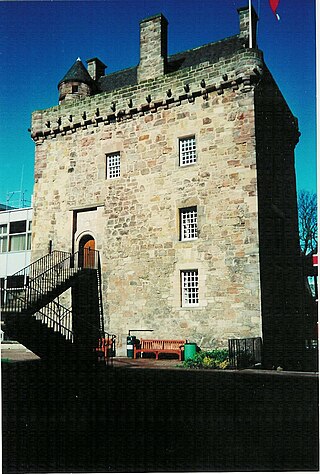
Sir Alexander Napier, Lord Laurieston was a 17th-century Scottish landowner, judge and Senator of the College of Justice. He was half-brother of the mathematician John Napier.
